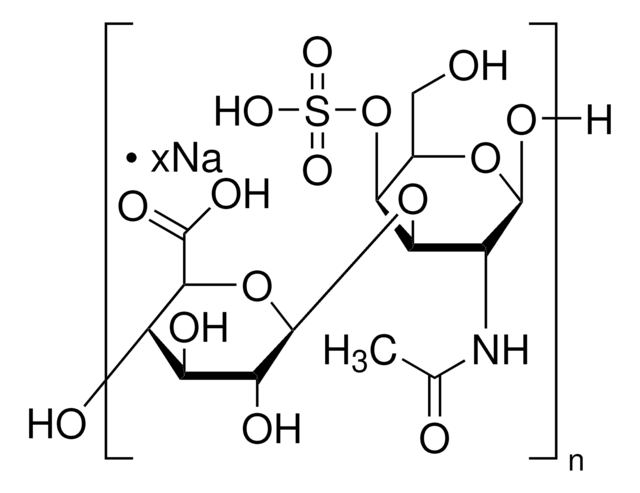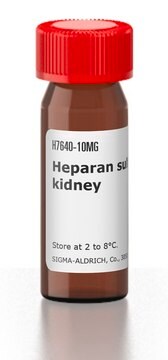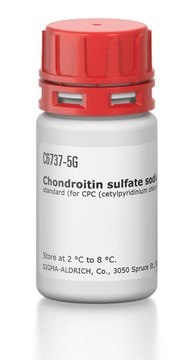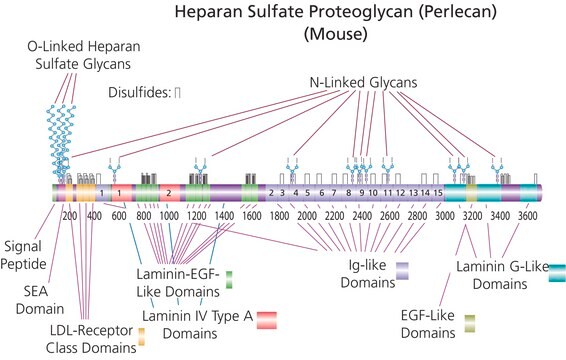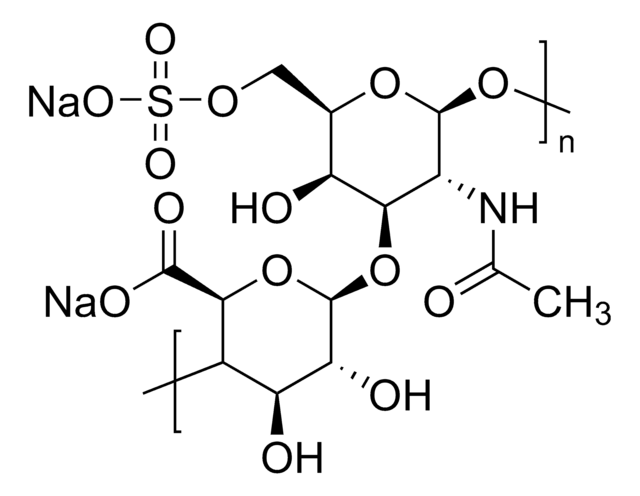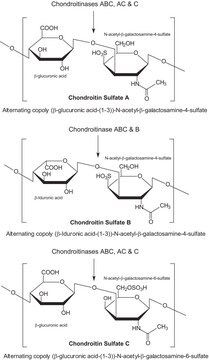C3788
Chondroitin sulfate B sodium salt
from Porcine intestinal mucosa, ≥90%, lyophilized powder
Sinonimo/i:
β-Heparin, Dermatan sulfate sodium salt
About This Item
Prodotti consigliati
Origine biologica
Porcine intestinal mucosa
Livello qualitativo
Saggio
≥90%
Forma fisica
lyophilized powder
Impurezze
≤20% water (Karl Fischer)
Colore
white
Solubilità
H2O: 5 mg/mL, clear, colorless
Cationi in tracce
Na: 7.0-11.5%
Temperatura di conservazione
2-8°C
Cerchi prodotti simili? Visita Guida al confronto tra prodotti
Descrizione generale
Applicazioni
Azioni biochim/fisiol
Componenti
Avvertenza
Nota sulla preparazione
Altre note
Codice della classe di stoccaggio
11 - Combustible Solids
Classe di pericolosità dell'acqua (WGK)
WGK 3
Punto d’infiammabilità (°F)
Not applicable
Punto d’infiammabilità (°C)
Not applicable
Dispositivi di protezione individuale
Eyeshields, Gloves, type N95 (US)
Certificati d'analisi (COA)
Cerca il Certificati d'analisi (COA) digitando il numero di lotto/batch corrispondente. I numeri di lotto o di batch sono stampati sull'etichetta dei prodotti dopo la parola ‘Lotto’ o ‘Batch’.
Possiedi già questo prodotto?
I documenti relativi ai prodotti acquistati recentemente sono disponibili nell’Archivio dei documenti.
I clienti hanno visto anche
Articoli
Glycosaminoglycans are large linear polysaccharides constructed of repeating disaccharide units.
Il team dei nostri ricercatori vanta grande esperienza in tutte le aree della ricerca quali Life Science, scienza dei materiali, sintesi chimica, cromatografia, discipline analitiche, ecc..
Contatta l'Assistenza Tecnica.